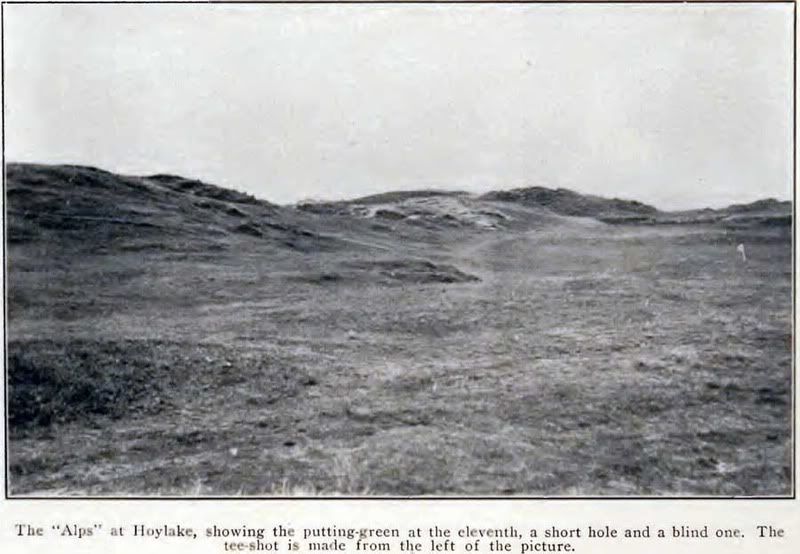I wasn't focusing on Tilly as such but really using him as an example to illustrate the point that CBM didn't invent the template concept, and that while he maybe elevated it to an art form and in the process refined certain hole designs, in parallel to what he was doing and even before he did what he did others were doing something similar.
Perhaps others such as Old Tom may have been doing something similar abroad, but in the US, to whom are you referring? Who were "the others" who were doing something similar
before CBM? Who in the United States was explicitly identifying specific fundamental concepts underpinning the great golf holes abroad and then modeling holes here after those specific holes and their underlying principles? And where are these golf holes?
Early you mentioned that there
"are numerous examples of descriptions in newspapers of early courses which refer to the Alps hole as though the idea of it were a well known concept. Look at some of the early routing plans Joe Bausch has posted and you note reference to Alps." I agree that holes called "the Alps" existed, but not sure what you mean when you write "as though the idea of it were a well known concept." The "idea of" what? What "well known concept" was represented by these "Alps" holes? My understanding was that "Alps" was a generic term used to describe hills on a golf course and Himalaya's was another such term, and that "Alps" was not at all tied to any particular hole concept or any particular golf hole. Prestwick's Alps hole may have been the most famous of these, but weren't there many holes not based on Prestwick's Alps Hole but nonetheless sharing its name? For example, wasn't there a yard 230 "Alps" hole at Hoylake?
I am not so sure there was any idea or "well known concept" beyond this generic connotation, and so I see little reason to conclude that the various early holes called "Alps" in the United States have any common characteristic other than that they all involved hills.
Here are some early American examples of "Alps" holes:
- Tuxedo had a blind par three called the alps. In 1897 it was listed at 106 yards.
- Baltusrol had an "Alps Hole" listed at 200 yards in 1903.
- Midlothian (Tweedie) had a 478 yard hole called "The Alps." A 1901 report noted that this hole was "distinguished by an unusually high cop-bunker, but it [was] only fifty yards from the tee."
- Myopia had a hole originally called "Hills" but at some point early on the name was change to "the Alps." It was originally around 200 yards and played over two rolling hills. One article compared it to the Maiden at Sandwich (but the article did not suggest it was actually based upon the Maiden hole. Over time Myopia's evolved into a longer hole, but the Alps/hills were a feature of the first shot. The hole was further altered after Hutchinson criticized the course after his 1910 tour with CBM.
- Ardsley Park had an Alps Hole of approx. 370 yards. I've posted a from 1896 photo below.

From the descriptions it doesn't seem like any of these holes were based on Prestwick's Alps or any any other particular hole. I guess one could argue that the Alps at Ardsley park could have been because at least the hole length is about right and the "alps" feature in about the right spot. But I think Willie Dunn used the term "Alps" to describe his artificial irregular mounds like those at Ardsley.